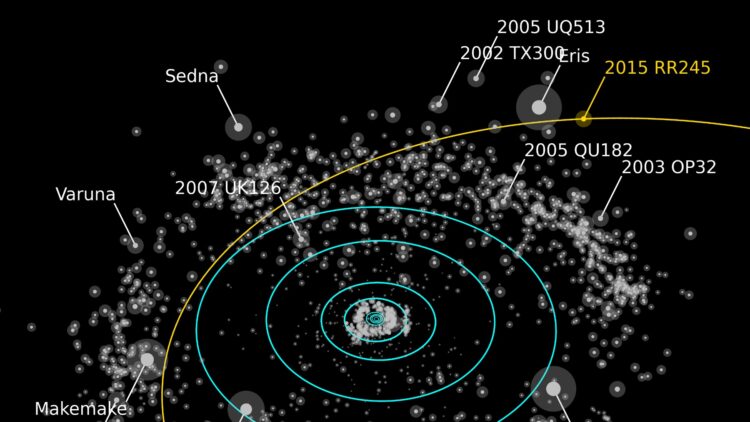Imagine an object so distant and lonely that it takes 25,000 years to complete a single orbit around the Sun. We’re talking about a newly discovered icy world that could join the select club of dwarf planets. It’s located far beyond Neptune, in a region scientists previously believed to be nearly empty. But the surprise doesn’t stop there. This celestial body not only expands our map of the Solar System but also confounds one of the most intriguing theories in modern astronomy: that a hidden planet is leading the orbital dance of the most distant objects.
A lost piece of the Solar System’s puzzle?
When we talk about remote worlds, we usually think of Pluto and its “cousins” in the Kuiper Belt. However, this new object pushes the envelope even further and surprises astronomers. After all, this planet’s numbers speak for themselves, as its farthest point from the Sun is 1,600 times the distance from Earth, while its closest is 44.5 times, comparable to Pluto’s orbit. At about 700 kilometers in diameter, it dwarfs Pluto, which measures 2,377 km, but is still large enough to be considered a dwarf planet.
“It’s like finding a missing piece of a puzzle we thought we already knew,” said Sihao Cheng, the leader of the team that identified the object.
Many distant objects in the Solar System have orbits aligned in specific patterns. This organization has led astronomers to suggest the presence of a massive body “shepherding” these objects. In fact, this is how the hypothesis of Planet Nine emerged, a supposed hidden giant, not yet directly observed. The problem is that 2017 OF201 doesn’t fit into this choreography. It follows its own path, without aligning with the expected pattern
When the missing piece refuses to fit
If other TNOs reinforced the existence of Planet Nine, this object is an outlier. This could indicate that:
- Other gravitational mechanisms are at work, besides a hidden planet.
- Or, in a more radical scenario, that Planet Nine may not exist at all.
It’s like putting together a puzzle and realizing that the newly discovered piece doesn’t fit the picture you imagined (hence the Planet Nine mystery deepens). We must also remember that, until recently, the region beyond the Kuiper Belt was believed to be practically deserted. In other words, the discovery of 2017 OF201 shows otherwise: there is much more to be found.
When a frozen world rewrites the cosmic map
It’s important to emphasize that this object is only visible in 1% of its orbit, meaning that dozens or even hundreds of similar worlds may exist, hidden by the immense void. If this is confirmed, the architecture of the Solar System will be much richer and more complex than previously thought. Another inspiring detail is that the discovery didn’t depend on new telescopes or space missions. Cheng even highlights:
“The presence of this single object suggests that there could be another hundred or so other objects with similar orbit and size; they are just too far away to be detectable now, even though advances in telescopes have enabled us to explore distant parts of the universe, there is still a great deal to discover about our own solar system.”
Indeed, it was made using public data from observatories (such as the Victor M. Blanco and the CFHT) and analyzed with algorithms developed by the team itself. This opens the door for students, independent researchers, and even astronomy enthusiasts to make significant contributions. And, let’s face it, that’s what makes astronomy so fascinating: the constant feeling that the universe always has more to reveal. It’s no wonder that a black hole in the Solar System worries scientists and may be linked to the discovery of Planet Nine.


